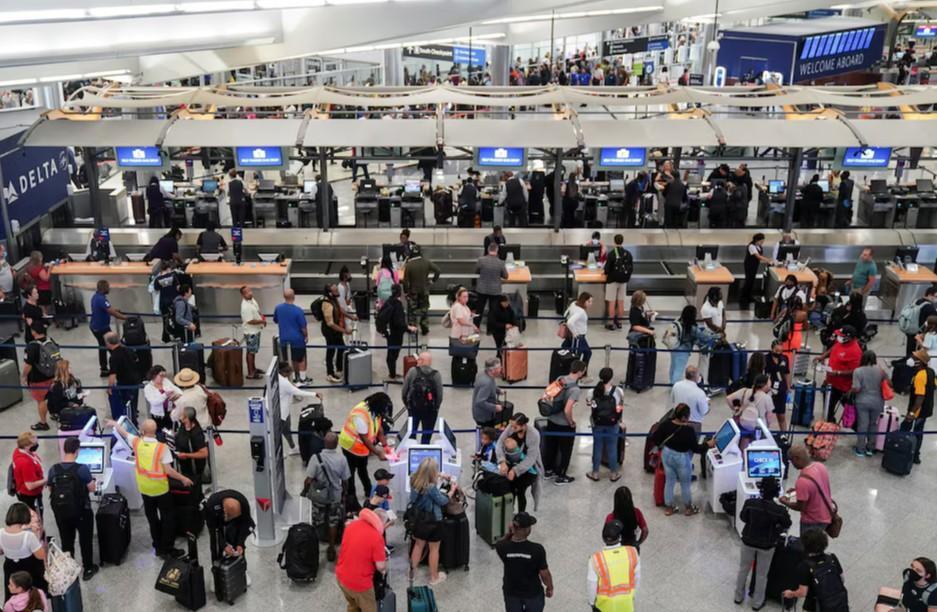
US Transportation Department Urges Flyers to ‘Dress Respectfully’
In a bid to promote civility and courtesy among air travelers, the US Transportation Department has launched a new campaign urging passengers to “dress with respect” while flying. The advisory, which stops short of imposing a dress code, emphasizes the importance of personal responsibility and better behavior on flights. This move comes amid a rise in unruly passenger cases, which have been a concern for airlines and aviation authorities in recent years.
The campaign is seen as a soft nudge toward promoting courteous travel, with no penalties for those who don’t follow the guidelines. According to officials, the goal is to encourage passengers to be mindful of their attire and behavior while traveling, and to promote a positive and respectful environment on flights. The US Transportation Department has not issued any specific dress code, but rather is relying on passengers to use their discretion and common sense when it comes to dressing for their flights.
The issue of passenger behavior has been a growing concern in the aviation industry, with reports of unruly passengers and incidents of air rage on the rise. In many cases, these incidents have been linked to passengers who are intoxicated, or who are wearing clothing that is deemed to be offensive or disruptive. By urging passengers to “dress with respect,” the US Transportation Department is hoping to reduce the likelihood of such incidents and promote a more positive and respectful environment on flights.
So, what does it mean to “dress with respect” while flying? According to the US Transportation Department, it means being mindful of one’s attire and avoiding clothing that may be deemed to be offensive or disruptive. This could include avoiding clothing with explicit language or imagery, as well as avoiding clothing that is too revealing or provocative. It also means being respectful of fellow passengers and avoiding behavior that may be deemed to be disruptive or disturbing.
The campaign is not just about what passengers wear, but also about their behavior while on board. The US Transportation Department is urging passengers to be respectful of their fellow travelers, and to avoid behavior that may be deemed to be disruptive or disturbing. This includes things like keeping noise levels down, avoiding strong perfumes or colognes, and being mindful of personal space.
The response to the campaign has been mixed, with some passengers welcoming the initiative and others expressing skepticism. Some have argued that the campaign is an overreach by the government, and that passengers should be free to wear what they want while flying. Others have expressed concern that the campaign could be used to target certain groups of passengers, such as those from minority communities or those with certain political views.
However, officials say that the campaign is not intended to be punitive or restrictive, but rather to promote a positive and respectful environment on flights. They argue that by encouraging passengers to be mindful of their attire and behavior, the campaign can help to reduce the likelihood of incidents and promote a more enjoyable and respectful travel experience for all.
The US Transportation Department is not alone in its efforts to promote civility and courtesy among air travelers. Airlines and aviation authorities around the world have been grappling with the issue of passenger behavior, and many have implemented their own initiatives to promote respectful travel. These have included things like passenger etiquette campaigns, as well as initiatives to reduce stress and promote relaxation on flights.
In addition to the campaign, the US Transportation Department is also working with airlines and aviation authorities to promote better behavior among passengers. This includes providing training and resources for flight attendants and other aviation personnel, as well as working to identify and address the root causes of unruly passenger behavior.
The issue of passenger behavior is complex and multifaceted, and there is no easy solution. However, by promoting civility and courtesy among air travelers, the US Transportation Department is taking an important step toward creating a more positive and respectful environment on flights. By urging passengers to “dress with respect” and be mindful of their behavior, the campaign can help to reduce the likelihood of incidents and promote a more enjoyable and respectful travel experience for all.
In conclusion, the US Transportation Department’s campaign to urge flyers to “dress with respect” is a positive step toward promoting civility and courtesy among air travelers. By emphasizing the importance of personal responsibility and better behavior, the campaign can help to reduce the likelihood of incidents and promote a more positive and respectful environment on flights. While the campaign may not be perfect, and may face challenges and criticisms along the way, it is an important step toward creating a more enjoyable and respectful travel experience for all.





